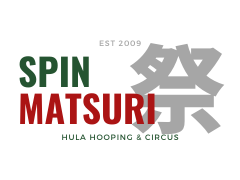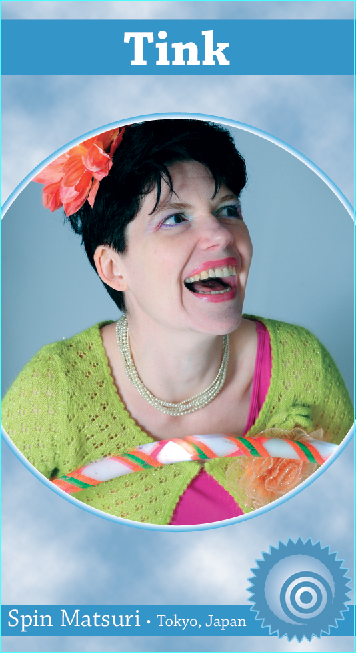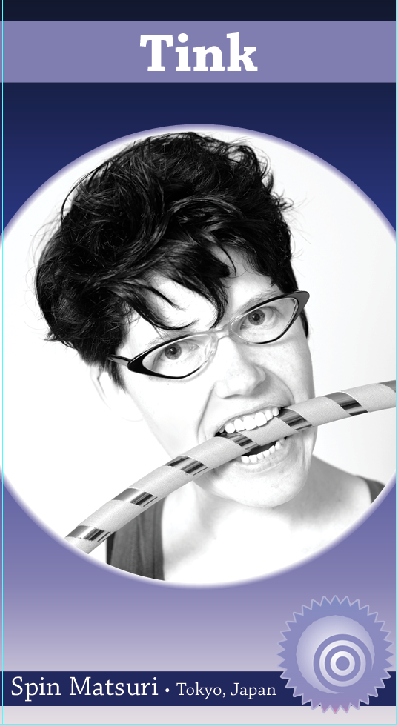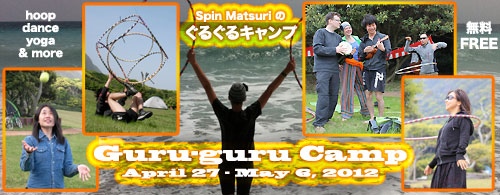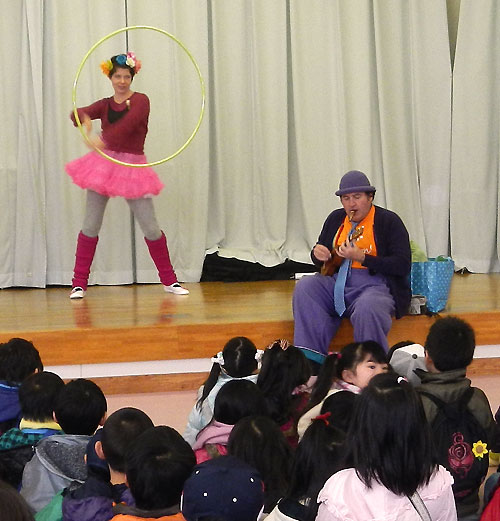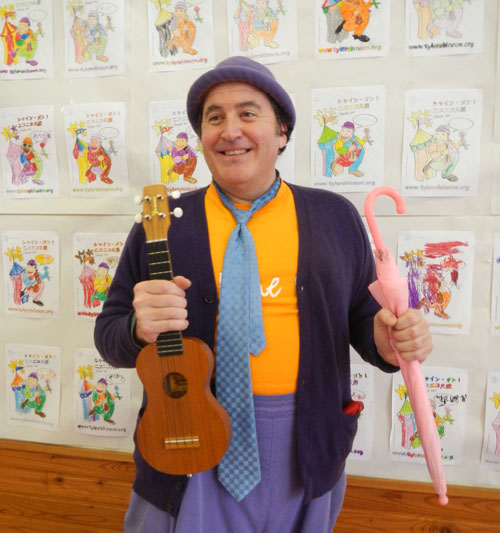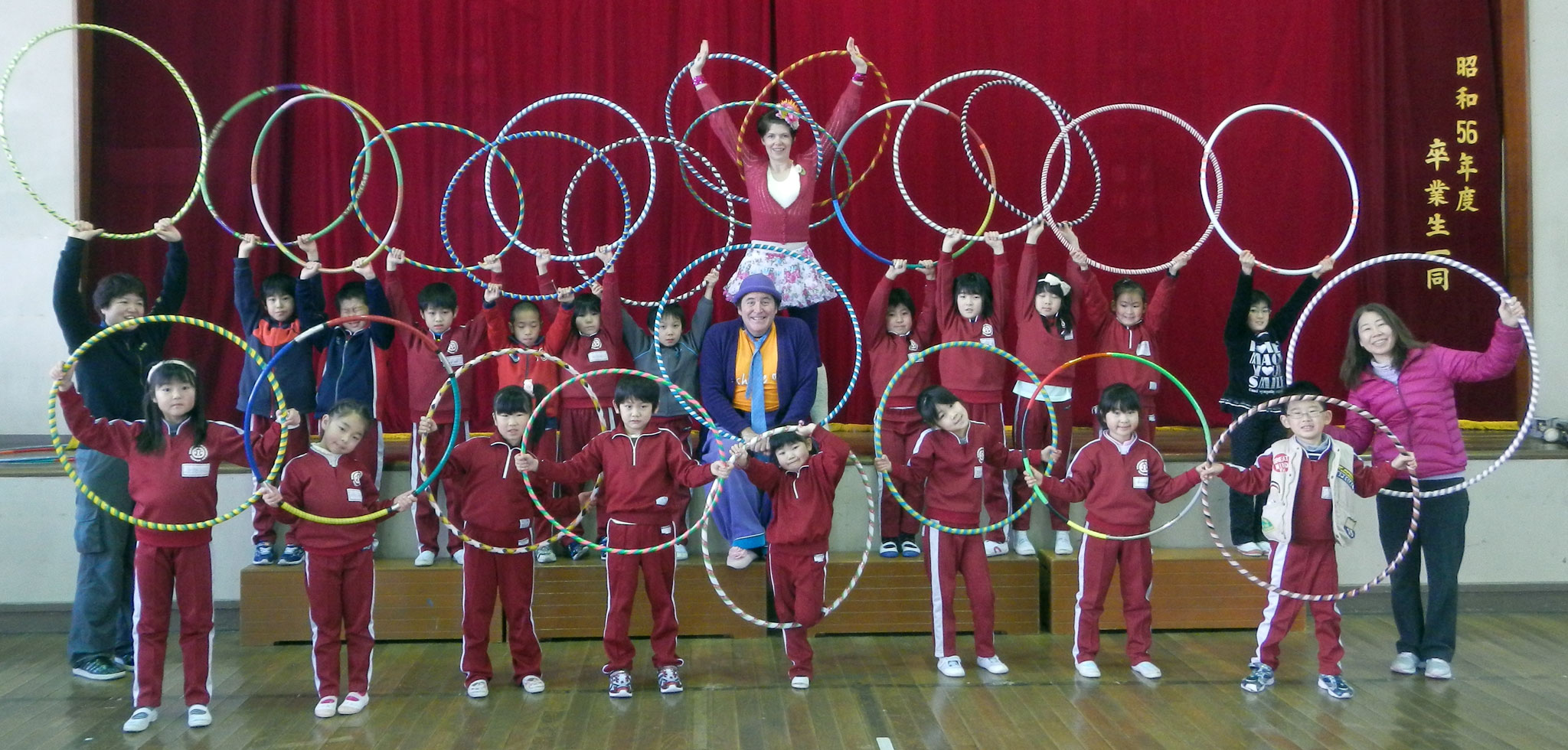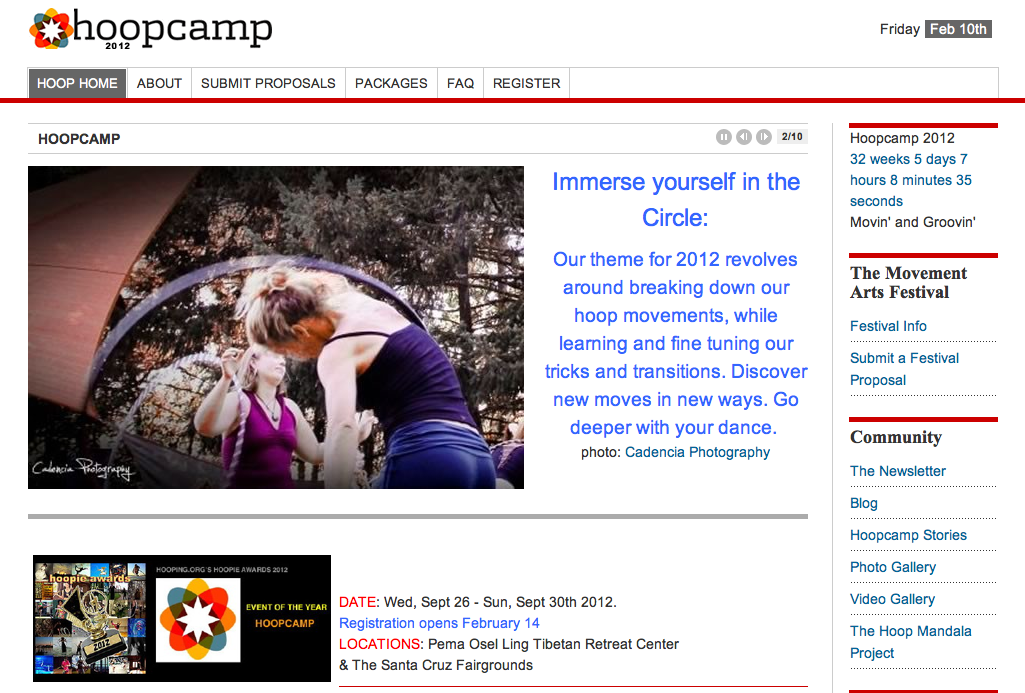2012 Guru-guru Camp Workshops & Activities
| Date | Early 朝 |
Morning 午前 |
Afternoon 午後 |
Evening 夕方 |
| Fri 4/27 | — | arrival 到着 |
set up & hoop jam | |
| Sat 4/28 | Hoop Drills フープドリール |
New Tricks + Trick Share 新し技 |
Juggling & DIY Toys ジャッグリング |
|
| Sun 4/29 | Hoop Drills フープドリール |
Anusara Yoga ヨガ Rachel |
Beginners & Beyond ビギンナーから |
Hoop Meditations フープ専心 |
| Mon 4/30 | Hoop Drills フープドリール |
Fun Yoga & Hoops 楽しいヨガとフープ |
Sand Onsen 砂裕 Jo |
Camp BBQ & Show バーベキュとショー |
| Tue 5/1 | Hoop Drills フープドリール |
Feeling the Beat ビートを探そう |
Partner Massage パトナーマッサジ Rachel |
|
| Wed 5/2 | Hoop Drills フープドリール |
Hoop Invention フープ想像 |
||
| Thu 5/3 | Hoop Drills フープドリール |
Partner Play & Poses パトナー遊びとポーズ |
Beginners Hoop ビギンナーフープ Shiho |
Sunset Spin 夕方スピン |
| Fri 5/4 | Hoop Drills フープドリール |
Fun Yoga & Hoops 楽しいヨガとフープ |
Camp BBQ & Show バーベキュとショー |
|
| Sat 5/5 | Hoop Drills フープドリール |
New Tricks + Trick Share 新し技 |
Hoop Meditations フープ専心 |
|
| Sun 5/6 | Laughter Yoga 笑いヨガ |
departure 出発 |
— | — |
Workshop Descriptions
New Tricks + Trick Share 新し技+トリックシェア: Add new tricks to your skills. What will they be? Come to camp to find out! The session will end with a trick share, so bring your latest move to show off and share. あなたのスキルに新しいトリックを追加します。彼らは何をでしょうか?を見つけるためにキャンプに来て!セッションはトリックシェアを終了しますので、自慢して見せると共有する最新の動きをもたらす。
Beginners’ Hoop ビギンナーフープ (Shiho): Hooping for newer hoopers. Learn the basics of hoop dance and groove to your own rhythm. All of Niijima is invited to attend. 新しいフーパー用フープレースン。フープダンスとあなた自身のリズムにグルーブの基礎を学ぶ。新島のすべてが出席するよう招待されています。
Beginners and Beyond ビギンナーから: We’ll cover hooping on waist, hand hooping moves, kicks, and dance movements in the hoop including footwork and arms. All of Niijima is invited to attend. 新しいフーパー用フープレースン。フープダンスとあなた自身のリズムにグルーブの基礎を学ぶ。新島のすべてが出席するよう招待されています。
Camp BBQ & Show バーベキュとショー: Let’s dine together! Bring something for the barbecue or bring a side dish to share. After dinner, we’ll have an open stage. Everyone is invited to perform any act (under 10 minutes, please), so get ready to show off your talents. 一緒に食事をしよう!バーベキューのために何をもたらすか、共有にサイドディッシュをもたらす。夕食後、私たちはオープンステージがあるでしょう。誰もがいずれかの行為を(10分の下に、してください)を実行するために招待されているので、あなたの才能を披露する準備をしなさい。
Feeling the Beat ビートを探そう: Add drama to your hoop dance with beat punctuation. Learn how to listen to the music and respond with breaks, stops and tosses. This is a way to bring sparkle to your hoop dance without learning any new moves. ビート句読点を使ってフープダンスにドラマを追加します。音楽を聴くと休憩、停止して投げて応答する方法を学びます。これは、任意の新しい動きを学習せずに、フープダンスに輝きをもたらすための方法です。
Fun Yoga & Hoops 楽しいヨガとフープ: A mix of yoga, acrobatics, stretching games, and hula hoops. How can you go wrong? Bring a yoga mat, please. ヨガ、アクロバット、ストレッチングゲーム、フラフープのミックス。どのように間違って行くことができますか?ヨガマットを持ってきてください。
Hoop Drills フープドリール: get your body moving each morning with hoop fitness, circus style. Core training with multiple hoops, body drills and hoop splits, plus stretching and aerobic training, too. All in a neat 30- 45 minute package. あなたの体はフープフィットネス、サーカススタイルで毎朝動かす。複数のフープ、ボディドリルとフープを使用してコアトレーニングも加えて、ストレッチと有酸素トレーニング、分割されます。45分パッケージ – きちんとした30のすべての。
Hoop Invention フープ想像: Get creative with the hoop! We’ll invent some new hoop moves by twisting our old moves inside out. Then let’s look at hoops a new way – they are swimming pools, cookies, mirrors… フープと創造入手!我々は、古い動き裏返しをねじることによって、いくつかの新しいフープの動きを作り出すでしょう。その後のはフープで新しい方法を見てみましょう – 彼らはプール、クッキー、ミラーを泳いでいる…
Hoop Meditations フープ専心: Relax and let go in the hoop. We’ll be hooping in the dark to gentle music to unwind our bodies and our allow our souls to soar. The mediations include a guided visualisation and self-paced dance. 体をリラックスする穏やかな音楽に、暗闇の中でフープれるでしょう、私たちは私たちの魂が舞い上がることができます。メディエーションは、ガイド付きの可視化と自分のペースで踊りが含まれています。
Improv Games (Kevin): Let’s play improvisational comedy games that combine humour and movement. Date TBD.
Juggling and DIY Toys ジャグリング: A beachside workshop. First we’ll make juggling balls from balloons and sand, then practice a simple juggle. ビーチサイドのワークショップ。まず、気球や砂からのボールをジャグリングするよ、単純にジャグリングの練習。
Laughter Yoga 笑いヨガ:May 6th is World Laughter Day. Before we pack up to go home, let’s practice some laughter yoga together. Ho ho ha ha ha! 5月6日は世界笑いの日です。家に帰って荷造りする前に、一緒に笑いヨガを練習しておきましょう。ホーホハッハッハ!
Partner Massage パトナーマッサジ (Rachel): We will use Thai, Breema, and Shiatsu techniques to help our partner feel better and more free. 我々のパートナーがより良く、より気軽にできるように、タイ、Breemaと、指圧のテクニックを使用します。
Partner Play & Poses パトナー遊びとポーズ: Hooping with a friend is twice the fun. We’ll learn to hoops with a partner for weaving, z-axis tricks, isolations and more – one hoop, two hoops, even four hoops. To end the session, we’ll create some beautiful poses you can strike for the camera with a partner or a larger group. 友人と一緒にフープと倍楽しいです。我々は、機織りのためにパートナーとのフープに学び、z軸のトリック、アイソレーションと -1フープ、フープ2、さらに4フープ。セッションを終了するには、私たちは、あなたがパートナー以上のグループにカメラを打つことができるポーズをいくつかの美しいを作成します。
Sand Onsen 砂裕 (Jo): Get buried up to your neck in hot damp sand and feel the tension leave your body. Mamashita Onsen is one of our favorite Niijima experiences. Jo will guide you there and back. Bath admission is 700 yen. 熱い湿った砂で首まで埋め取得し、緊張があなたの体を残す感じ。Mamashita温泉は私たちのお気に入りの新島の経験の一つです。ジョーが、バックをご案内します。バス入場料は700円です。
Shikinejima Excursion 式根島遠足 (Tod): A trip to Shikenejima, the island next to Niijima. We’ll go by ferry and spend the day. Shikine is a lovely little island. Date TBD. 式根島への旅行、新島の隣にある島。私たちはフェリーで行くと一日を過ごすでしょう。式根島では、美しい小さな島です。未定日付。
Sunset Spin 夕方スピン: At around 5:30, as the sun hangs low in the sky, we’ll head over to the large stage and open area near camp for a spin jam. Let’s crank the tunes and watch the stars come out. Bring your glow toys and LED hoops and maybe a picnic dinner… 太陽が空に低いがハングするように午前5時30分ごろ、我々はスピンジャムのためのキャンプの近くに大規模なステージとオープンエリアへ向かうでしょう。曲をクランクと星が出てくる見てみましょう。あなたの輝きのおもちゃと、おそらく、LEDフープ、ピクニック夕食を持って…
Yoga ヨガ (Rachel): This session of Anusara-inspired yoga will open your hips, stretch your back, and expand your rib cage to breathe in more of the sea air. Open your body to the flow of hooping while working out some of those of those kinks! アヌサラの影響を受けたヨガのこのセッションでは、お尻を開いて、背中を伸ばし、海の空気をより吸い込むように、胸郭を拡大していきます。これらのキンクのもののうちのいくつかを作業中にフープの流れに身を開く!
Instructors & Activity Leaders
Jo Thredgold organises the Roxby Hoopers group in South Australia. She lived in Tokyo for 8 years before returning to Australia, where she works an an archeologist.
Kevin Bundy is an astronomer and enthusiastic new hooper.
Rachel Farber is a licensed acupuncturist and herbalist, yoga teacher, natural food enthusiast, crafter, and editor who lives with her family in Yokohama.
Shiho Itooka learned to hoop on the Peace Boat and has since been living and hooping in Sydney as well as her hometown, Kobe. She even hooped in Antartica!
Tink runs Spin Matsuri, has lived in Tokyo since 1998, and loves to teach workshops. She currently owns 42 hula hoops.
Tod McQuillin is an avid cyclist, camp cook, and general lover of relaxed outdoor life. He knows Niijima backward and forward.
Notes:
- We will also be shooting a video throughout the week! Be prepared for fun and drama on camera.
- Camp is a relaxed atmosphere, so exact times are difficult to say but the early session is between sunrise and breakfast and runs for 30-45 minutes; the morning session is around 10 am and lasts 60-90 minutes; afternoon is 2ish; the evening session generally starts before sunset. There will be music to call you to class because we don’t do clocks at camp.
- The schedule is subject to change due to weather, participant interest, and other factors.
- All activities are free and led by Tink unless noted.
- Come and go as you please. You can attend all the workshops or none of them.
- If you’d like to lead an activity, workshop, or other camp-related event, please send an e-mail; we’d love to include you on the schedule.
